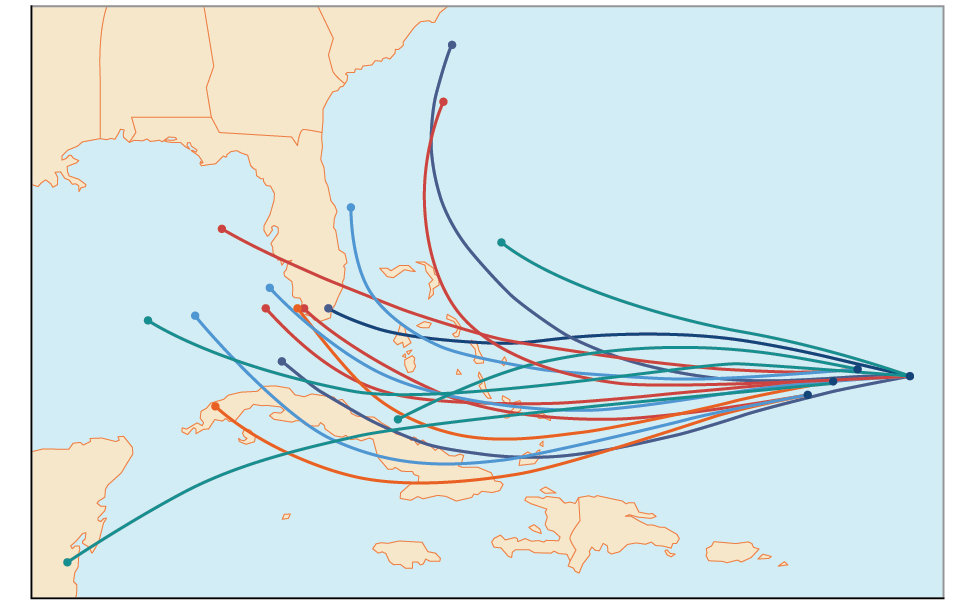| << Chapter < Page | Chapter >> Page > |

Residents of the Southeastern United States are all too familiar with charts, known as spaghetti models, such as the one in [link] . They combine a collection of weather data to predict the most likely path of a hurricane. Each colored line represents one possible path. The group of squiggly lines can begin to resemble strands of spaghetti, hence the name. In this section, we will investigate methods for making these types of predictions.
Suppose we roll a six-sided number cube. Rolling a number cube is an example of an experiment , or an activity with an observable result. The numbers on the cube are possible results, or outcomes , of this experiment. The set of all possible outcomes of an experiment is called the sample space of the experiment. The sample space for this experiment is An event is any subset of a sample space.
The likelihood of an event is known as probability . The probability of an event is a number that always satisfies where 0 indicates an impossible event and 1 indicates a certain event. A probability model is a mathematical description of an experiment listing all possible outcomes and their associated probabilities. For instance, if there is a 1% chance of winning a raffle and a 99% chance of losing the raffle, a probability model would look much like [link] .
| Outcome | Probability |
|---|---|
| Winning the raffle | 1% |
| Losing the raffle | 99% |
The sum of the probabilities listed in a probability model must equal 1, or 100%.
Given a probability event where each event is equally likely, construct a probability model.
Construct a probability model for rolling a single, fair die, with the event being the number shown on the die.
Begin by making a list of all possible outcomes for the experiment. The possible outcomes are the numbers that can be rolled: 1, 2, 3, 4, 5, and 6. There are six possible outcomes that make up the sample space.
Assign probabilities to each outcome in the sample space by determining a ratio of the outcome to the number of possible outcomes. There is one of each of the six numbers on the cube, and there is no reason to think that any particular face is more likely to show up than any other one, so the probability of rolling any number is
| Outcome | Roll of 1 | Roll of 2 | Roll of 3 | Roll of 4 | Roll of 5 | Roll of 6 |
| Probability |
Do probabilities always have to be expressed as fractions?
No. Probabilities can be expressed as fractions, decimals, or percents. Probability must always be a number between 0 and 1, inclusive of 0 and 1.

Notification Switch
Would you like to follow the 'College algebra' conversation and receive update notifications?